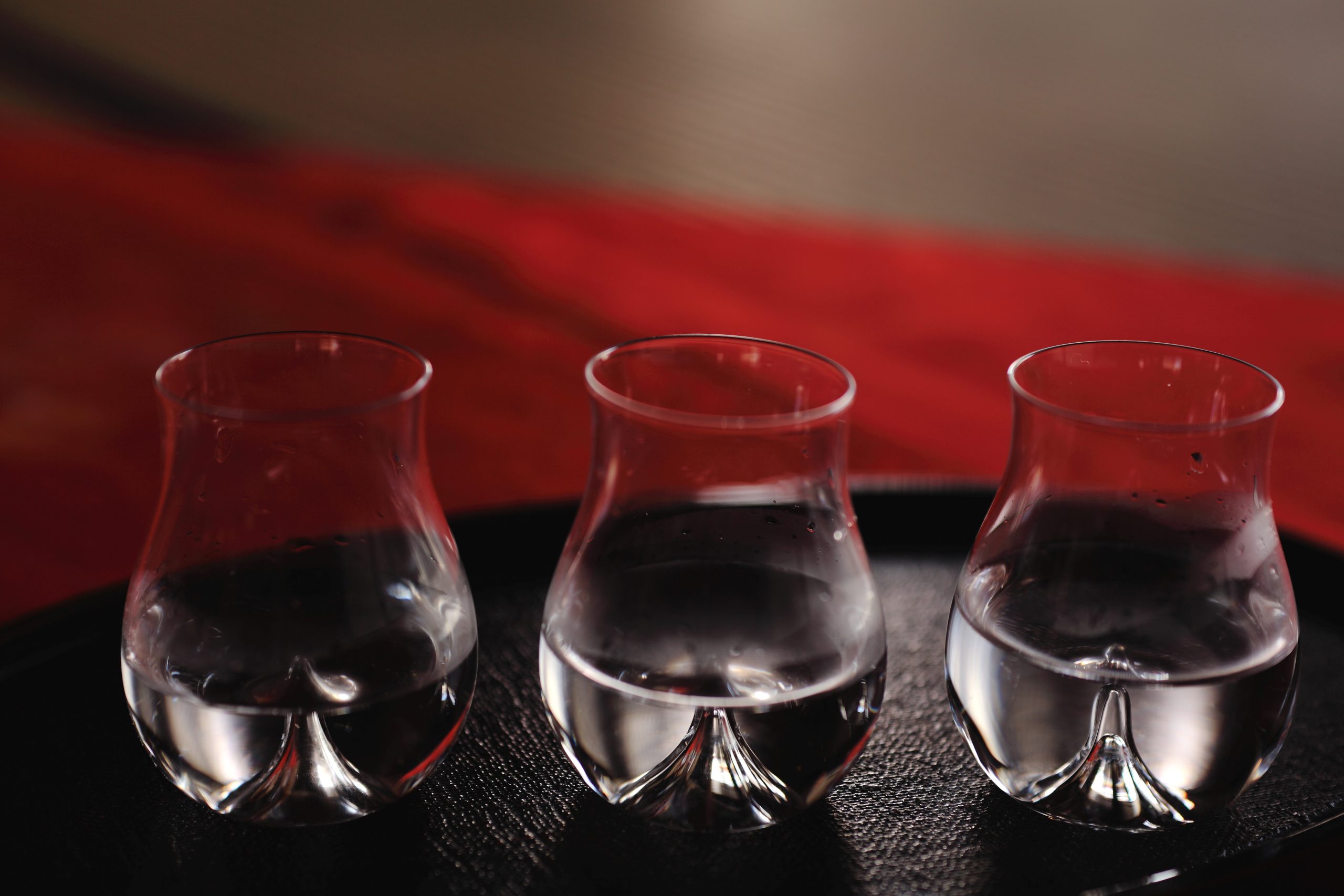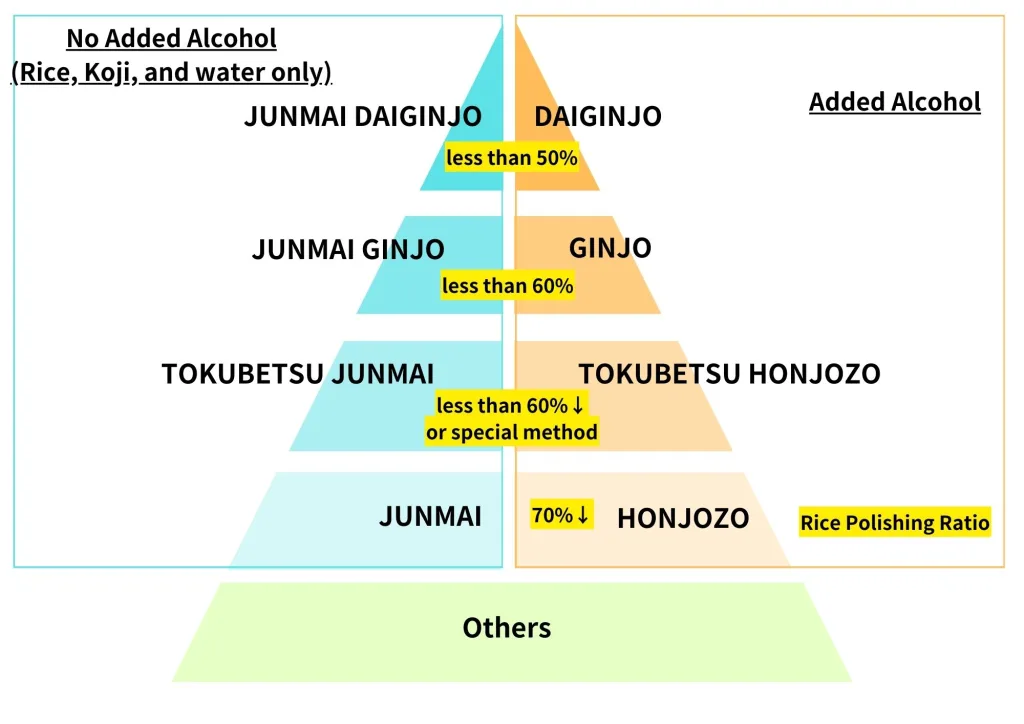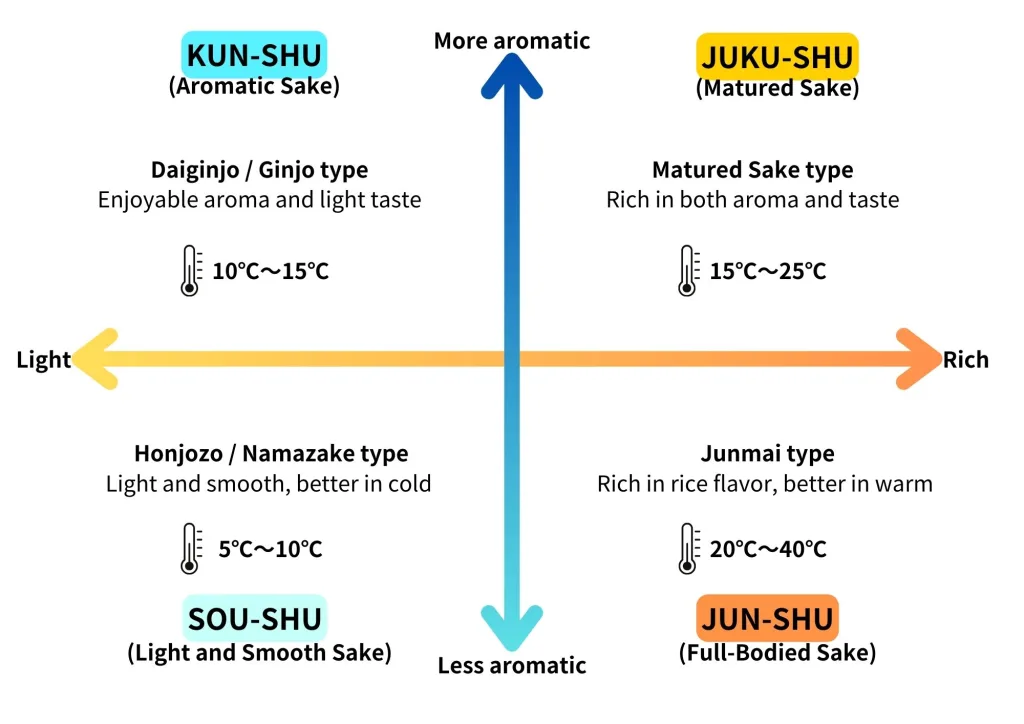What types of Sake should I choose?
There are many ways to choose Sake, such as asking a waiter or reading reviews. But I think, it is better to know more about Sake before you pick one, especially this is very unique alcohol.
The first thing I would like to talk about is the types of Sake based on ingredients, and also the types of Sake based on flavor profiles. These two key pieces of information will make selecting the right Sake much easier.

Types of Sake by Ingredients
There are eight main types of Sake, categorized by ingredients and production methods. This is usually indicated on the bottle, making it easier to understand and remember.
The classification of sake is determined by whether or not additional alcohol is added and the rice polishing rate. Typically, extra alcohol is added to create a unique taste and flavor, distinguishing it from the Junmai type, which only contains rice, koji, and water. Another key criterion is the rice polishing ratio: the more the rice is polished, the clearer and smoother the taste, though this also increases the cost.
Here is the matrix of sake classification.

Ginjo-shu (Ginjo Sake)
Made from rice, rice malt, and brewing alcohol with a rice polishing ratio of 60% or less. Ginjo-shu is known for its fruity and floral aroma, called ‘Ginjoka’. Best enjoyed chilled to enhance its aroma and clean taste.
Daiginjo-shu (Daiginjo Sake)
Similar to Ginjo-shu but with a rice polishing ratio of 50% or less. The finer rice polishing results in a clear flavor with a beautiful fruity aroma. It is also best enjoyed chilled.
Junmai-shu (Junmai Sake)
Made from rice and rice malt, with no restrictions on the rice polishing ratio. It has no added alcohol, offering a full-bodied aroma, Umami, and sweetness from the rice. It can be enjoyed chilled, at room temperature, or warmed.
Tokubetsu Junmai-shu (Special Junmai Sake)
Made from rice and rice malt with a rice polishing ratio of 60% or less or produced by a special method unique to each brewery. Therefore it shows characteristics of the brewery.
Junmai Ginjo-shu (Junmi Ginjo Sake)
Combines characteristics of Junmai-shu and Ginjo-shu with a rice polishing ratio of 60% or less. It has a lovely Ginjo aroma and a rich rice flavor. Best enjoyed chilled.
Junmai Daiginjo-shu (Junmai Daiginjo Sake)
Made from rice and rice malt with a rice polishing ratio of 50% or less. It combines the attributes of Junmai and Daiginjo-shu, with a melon-like fruity aroma and a clean rice flavor. Best enjoyed cold.
Honjozo-shu (Honjozo Sake)
Made from rice, rice malt, and brewing alcohol with a rice polishing ratio of 70% or less. It has a light, refreshing taste and a clean aftertaste, making it a good introduction to Sake.
Tokubetsu Honjozo-shu (Special Honjozo Sake)
Made from rice, rice malt, and brewing alcohol with a rice polishing ratio of 60% or less or produced using a special method. It has a dry, crisp taste with a unique character from the brewer.
Types by Flavor and Aroma
Sake can also be classified into four main types based on flavor and aroma.
Here is another matrix to look for your preferable flavor.

Kun-shu (Aromatic Sake)
Sake with a light, fragrant flavor, commonly found in Daiginjo and Ginjo-shu. It is recommended as an aperitif and pairs well with light appetizers, similar to champagne.
Sou-shu (Light and Smooth Sake)
Namazake and Honjozo, among others, have a moderate aroma and light, easy-to-drink flavor. They are great with refreshing appetizers and salads.
Jun-shu (Full-Bodied Sake)
Aromatic Sake with a full-bodied flavor, often found in Junmai type, which contains rich rice Umami and sweetness. It pairs well with foods typically served with light red wines, such as cheese or dishes with spices and herbs.
Juku-shu (Matured Sake)
A type of Sake with a full-bodied, deep flavor, exemplified by Junmai-shu. It pairs well with meat dishes and main courses with strong flavors.
So which Sake is good for me?
Sake is made from rice, which is typically polished in high-quality facilities. This polishing process takes a long time, so the higher the polishing rate, the higher the price tends to be. Daiginjo, for instance, has the highest polishing rate and is therefore the most expensive. Of course, as expected, Daiginjo offers premium taste, aroma, a special drinking experience.
On the other hand, the taste of sake varies with its ingredients, making it enjoyable to discover your favorite by trying different types.
The best way to appreciate Sake’s aroma and flavor is by tasting it. Use this guide to help you choose the perfect bottle at the store.